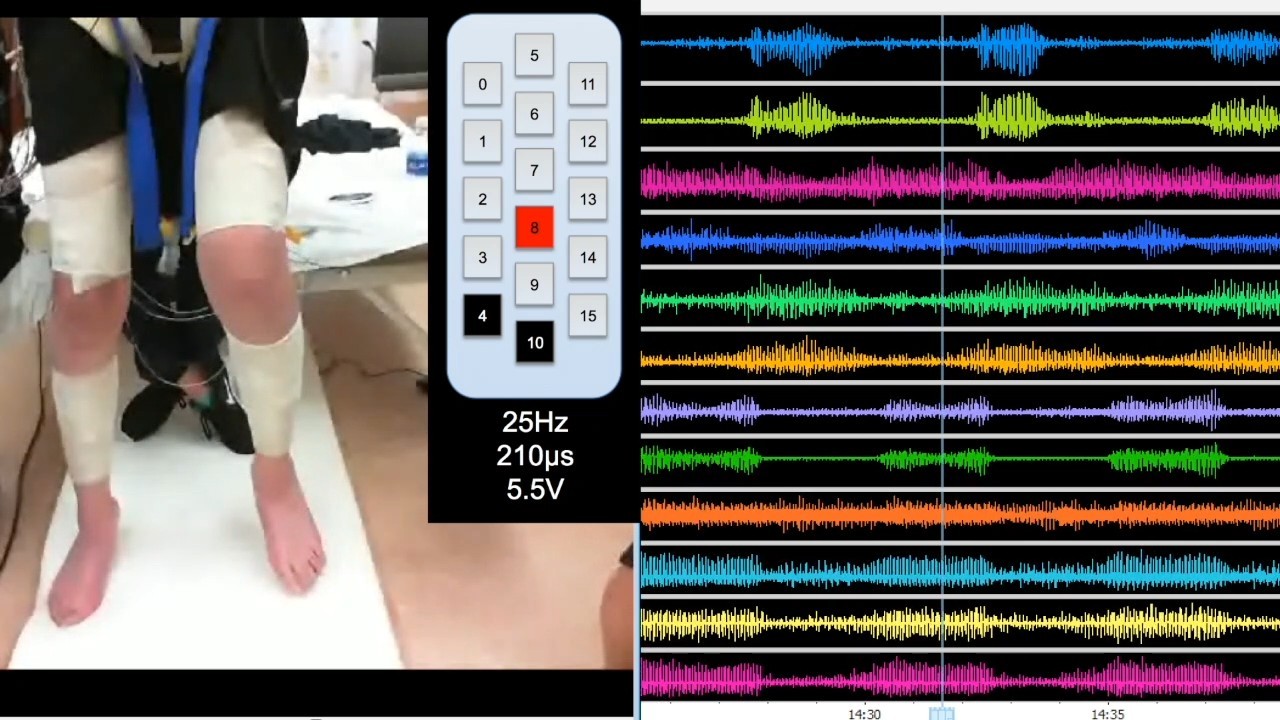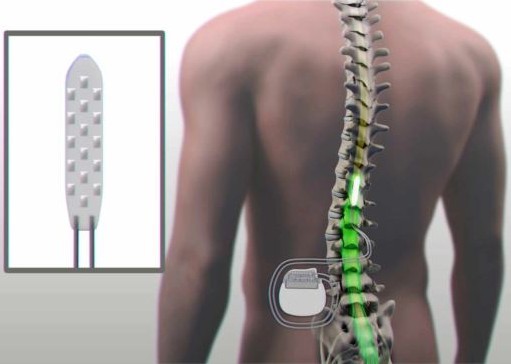In the United States, the paralyzed kicked in after electrical stimulation of the spinal cord

Igor Lavrov, Dmitry Saenko, Yuri Gerasimenko, and other researchers at the Neuro Engineering Laboratory at Mayo Clinic (USA) used electrical stimulation of the spinal cord to help a paralyzed patient named Jered Chinnock to move their legs, to stand almost without help (at a voltage of 2.1 volts) and completely unassisted (when the voltage was raised to 2.2 volts). According to scientists, for the first time in the history of medicine, epidural electrical stimulation (EES) allowed a paralyzed patient to perform such actions within just two weeks, that is, eight EES stimulation sessions after implant activation.
In the epidural space of Jared's spine, a bar with 16 electrodes was inserted (Specify 5-6-5, Medtronic). The electrodes received a signal from another RestoreSensor SureScan MRI implant (Medtronic) and stimulated the spinal cord without any effect on the muscles. Signals were applied in pulses of 0.5 milliseconds at a frequency of 1 Hz with voltages up to 5.5 volts.
Even without prior training, the paralyzed patient was able to move his fingers and whole legs with will power. The miracle that everyone else is used to, the so-called. "normal people.
Jared Chinnock broke his back three years ago in a car accident. Damage to the spinal cord in the sixth thoracic vertebra means that the guy could not feel anything below the torso. Although the legs and other organs remained intact, they no longer received a signal from the brain.
Before the device was implanted, the patient underwent repeated sessions of intensive physical therapy. A group of 30 specialists worked on it for 22 weeks, conducting three training sessions per week. They had to restore muscle tone and prepare them for the load and receiving signals from the spinal cord. It was also important to stimulate the spinal cord itself: to identify those specific places where neural activity is observed during muscle stimulation and attempts of certain movements on the part of the patient. It was in these places that 16 electrodes were installed.
Doctors constantly conducted tests - and some of the results led to the conclusion that the damage to the spinal cord can be "reversible", that is, you can try to restore the passage of the signal through the injury site in the lumbosacral spine.
The illustration shows the profile of spinal cord injury in a patient. It shows that some indicators have improved after 16 weeks of physical therapy, compared with rates after 8 weeks. Only in the second month of testing in a patient, according to the results of electromyography, the first activity was registered (in Figure F below right).

After physical therapy, the patient was implanted with an electrode into the epidural space of the spine just below the injury site in the sixth thoracic vertebra — into the lumbar enlargement approximately in the middle of the back. The electrode was connected to a computer-controlled device mounted under the skin. The idea was to modulate a signal that would naturally flow through the neurons of the spinal cord. A computer transmits a signal to a device, and it modulates a signal of a certain type through an electrode.

Jared says he was able to move his fingers on the first day, when experts activated the electronic stimulator. Within two weeks, he successfully made walking movements (lying on the couch) and stood on his own without the help of doctors, only with self-support from his upper body for parallel bars.

Electromyography indices (below) when signals with different voltages are applied through the indicated electrodes: 1.5 volts and 2.2 volts
Jared moves his foot with different degrees of intensity
Neurosurgeons say that the results of the experiment exceeded expectations, and the patient continues to show progress as he gets used to neuromodulation from the implant.
This medical case is described on April 3, 2017 in Mayo Clinic Proceedings .
The paralyzed patient stands still and also sways in a controlled manner.
Neuroengineers hope that the further development of this technology will help to return the basic motor functions to many other paralyzed people. Of course, they will not be able to run like sportsmen, but they will be able to at least stand still without assistance and even walk slowly. Apparently, the condition for the partial return of motor functions is that the damage is irreversible. But in order to make sure that a signal can still pass through the damaged area of the spinal cord, in any case, it will be necessary to undergo long-term studies, tests and therapy.
Unfortunately, scientists have not yet been able to decipher the real signals that the brain sends to the spinal cord. The current experiments are similar to those of Pavlov, although at a higher level. Scientists are just groping for the true control of the nervous system from the outside and the translator of signals from the computer to the neurons and back with decoding and encoding in real time.
